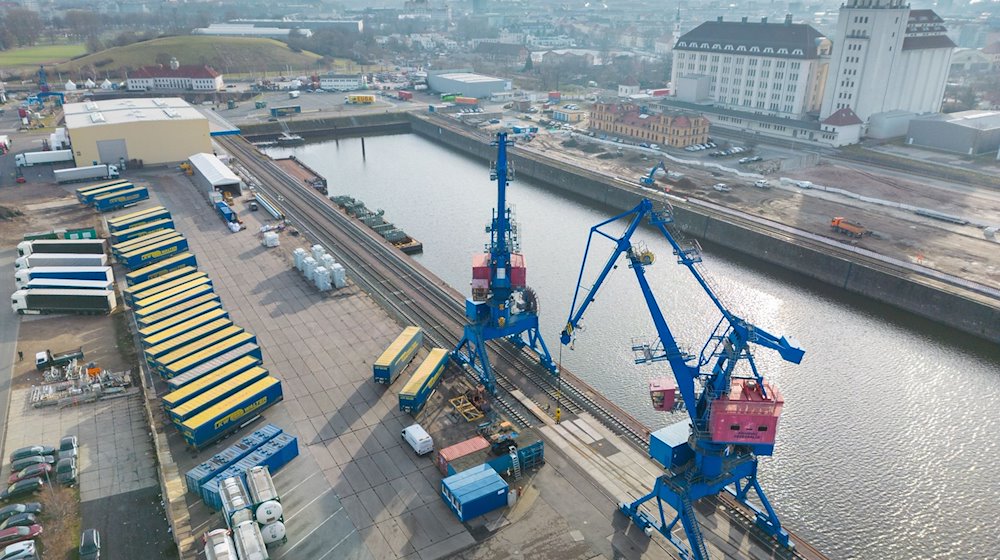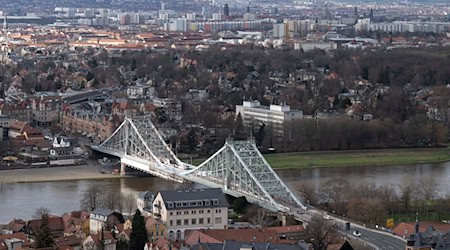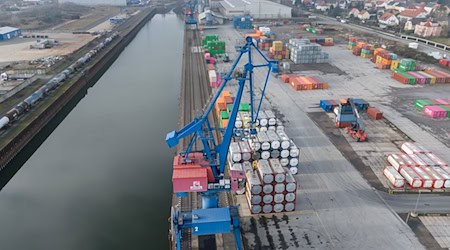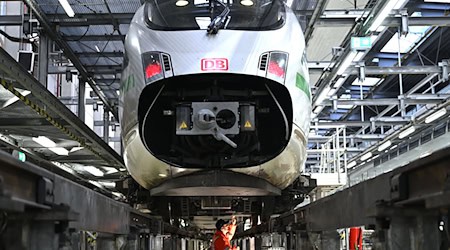At just under 2.7 million tons, Sächsische Binnenhäfen Oberelbe GmbH (SBO) recorded a significant decline in goods handling last year. According to the company, which also has sites in Saxony-Anhalt, Brandenburg and the Czech Republic, this was 8.9 percent less than in 2022. Despite the difficult economic situation, Managing Director Heiko Loroff drew a positive balance. Despite a decline in turnover of around 3 percent to just under 25 million euros, the port association will generate a significant annual profit of around 300,000 euros. "We are prepared for times of crisis and have learned to survive even then."
The balance sheet is particularly pleasing in the container sector with slight growth. "We are seeing a clear stabilization here, and the trend will continue upwards," said Loroff. Investments were made in the Czech Republic in 2023, also with the support of the local government. Despite the war, SBO is also investing a further six million euros in infrastructure at the Port of Dresden, half of which is being funded by the federal government. A new trailer port is being built there, which should double the capacity from May.
According to Loroff, the navigability of the Elbe puts pressure on the balance sheet when no economical transports are possible for months, as was the case last fall. "The implementation of the overall Elbe concept is not really getting off the ground," he criticized. In addition, there are no more ships and there are "enormous quantities of goods" in the seaports that need to be transported in other ways. At the moment, when the water level is higher, larger ships can be used, "but that is no longer possible at normal water levels". According to him, last year 200,000 tons had to be unloaded from ships in Magdeburg alone and transported to the Czech Republic by truck due to a lack of freight space on the Upper Elbe. The river therefore needed regulation and water management.
According to the SBO, the three Saxon ports of Dresden, Riesa and Torgau achieved a "good result" with almost 2 million tons of goods handled, with ship handling in particular increasing. In the port of Torgau alone, 102 ships were loaded with almost 32,000 tons of gravel. Container handling at the port of Riesa was slightly higher at 33,748 units. Heavy cargo such as turbines, transformers and generators were loaded at the ports of Dresden and Lovosice.
Despite the suspension of inland shipping due to low water levels from June to November, cargo throughput at the Upper Elbe ports rose by 8.7 percent to 112,457 tons. The two ports of Decin and Lovosice were slightly down on the previous year. "At the moment, we are also seeing a clearly positive trend for the inland ports," Loroff summarized. There is no reason to complain, he said, the conditions are stable, the prospects are very good and jobs are secure.
Copyright 2024, dpa (www.dpa.de). All rights reserved










